The takahē are, well were, two species of flightless swamphens endemic to New Zealand. The North Island takahē (Porphyrio mantelli) became extinct shortly after the Maori settlement of New Zealand in the early 1300s. The South Island takahē (P. hochstetteri) is still alive, but just barely. Its population declined rapidly naturally after the last glaciation, when rising temperatures transformed the alpine grasslands the birds thrived in into forests that were less hospitable. Their population was further stressed when Polynesians arrived 800-1,000 years ago; in addition to hunting the takahē for food, the Polynesians introduced rats and dogs. The South Island takahē was almost wiped out entirely when Europeans settled the island in the 19th century, by both hunting the birds as well as introducing red deer which competed for their food source and stoats which preyed on the birds. Thought extinct, the bird was rediscovered in the Murchison Mountains in the 1940s. Conservation efforts were put in place and the bird is slowly making a recovery. It can still be found in the Murchison Mountains but has also been translocated to several wildlife preserves on both the North and South Islands as well as several predator-free offshore islands. Earlier this year, CollectA released a figure of the South Island takahē, to my knowledge only the second figure of this species since the Cadbury UK Yowies version from 1998!
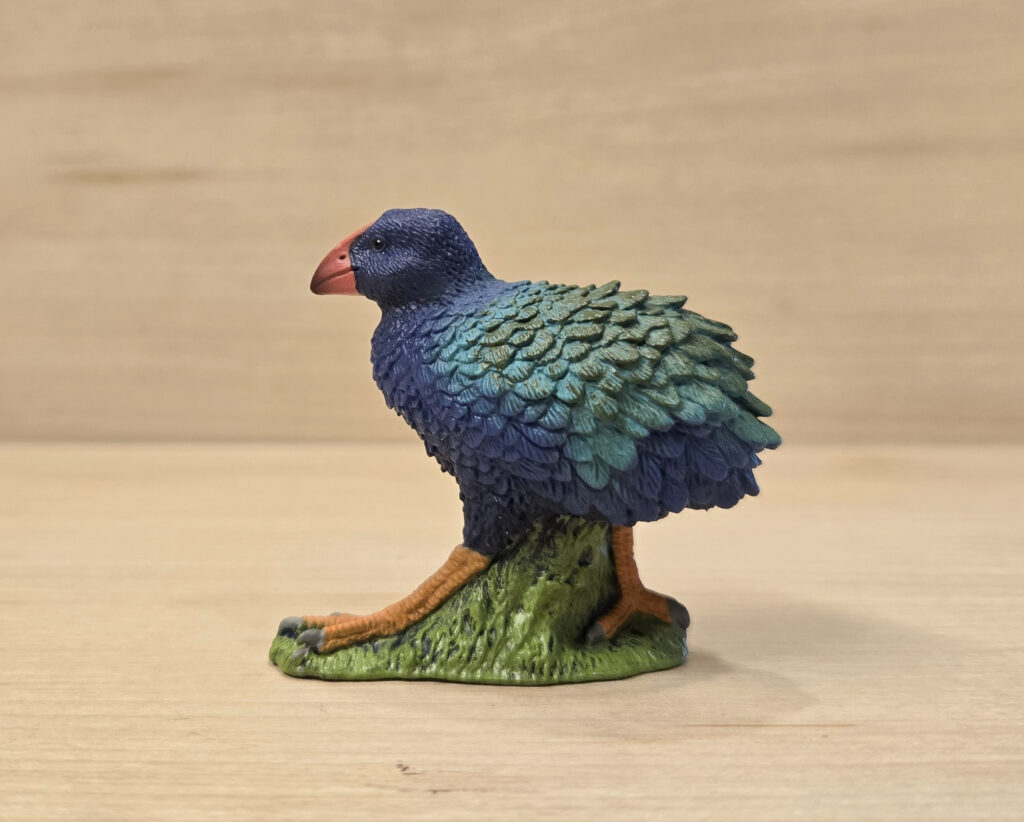
Birds are inherently difficult to calculate scale for, since metrics are typically based on dead, outstretched specimens. Luckily, I found some data on the standing height of this particular bird! The bird’s height, exclusive of the base, comes to approximately 4.8 cm for a scale of 1:10.4 (the South Island takahē is the largest of the extant Rallidae).
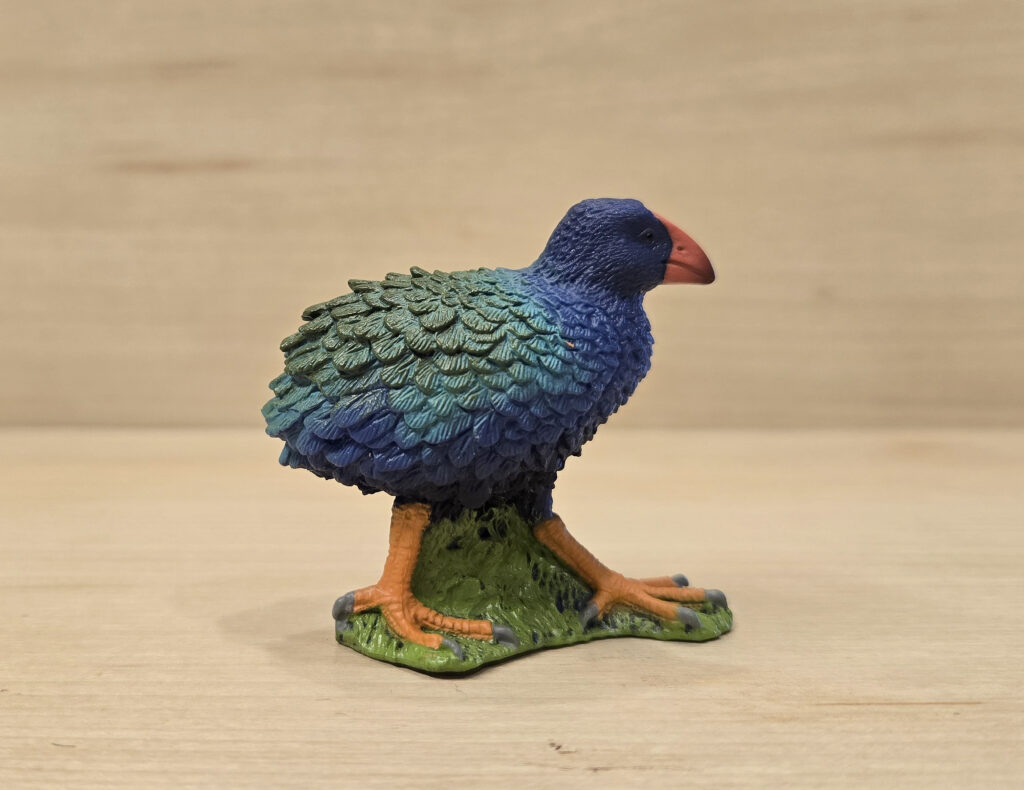
CollectA’s takahē is sculpted in a fairly neutral stance. Individual feathers are sculpted all over its body and there is fine textural detail in the legs and feet. To add support, it was sculpted with vegetation between its legs up to its underparts. I know this bothers some collectors, but for a bird of this stature, it doesn’t bother me too much (it looks more natural than the vegetation CollectA added to its flamingo, for example).
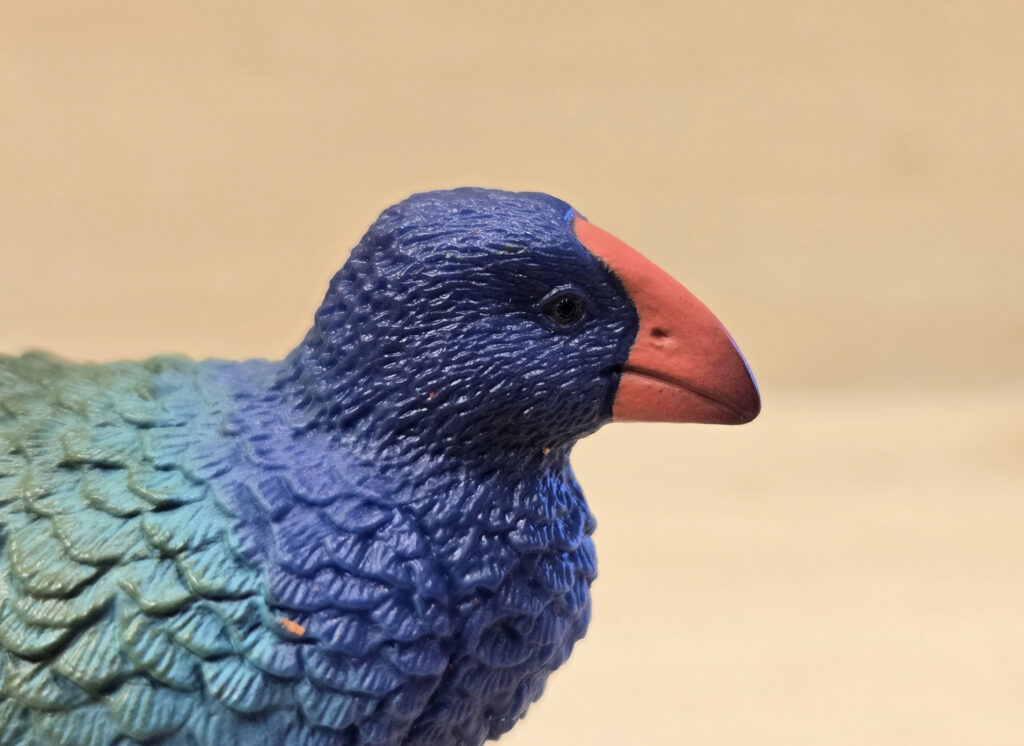
The paint job on the bird is very nice; the base color is a dark navy blue with teal blue on the wings transitioning into olive on the back. In nature, the takahē is iridescent, and CollectA did a decent job of simulating that in the color transitions. The legs, feet, and beak are mostly orange; the beak has dark infuscations at the tip and the claws are grey.
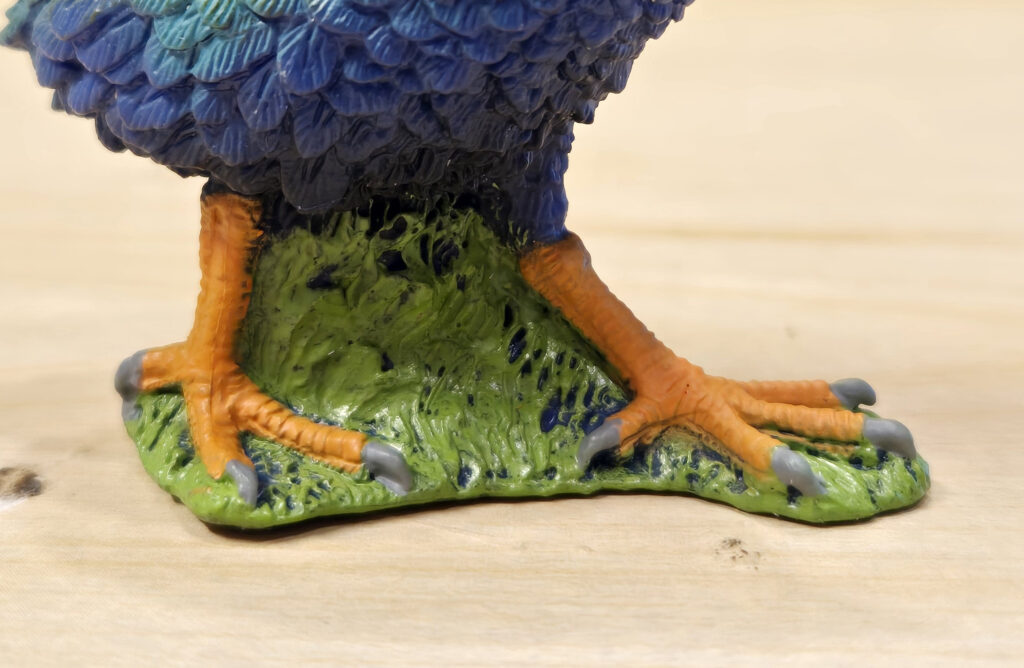
On thing that caught me off-guard is the color of the base. The vegetation is green with blue streaks. I get the impression the base color of the entire figure is dark blue and the green was painted over the blue. I first saw the streaks as sloppy painting, but looking at promotional pics, it was intended there was to be dark streaks among the vegetation. Maybe the blue was added to the green? Not sure what the painting process was here, but having the streaks be the same blue as the birds’ body makes the presentation come across as sloppy. It might have been better to have the dark streaks on the vegetation another color. And to be honest, it doesn’t really bother me at all, but thought it was important to point out for the pickier collectors out there ;-).
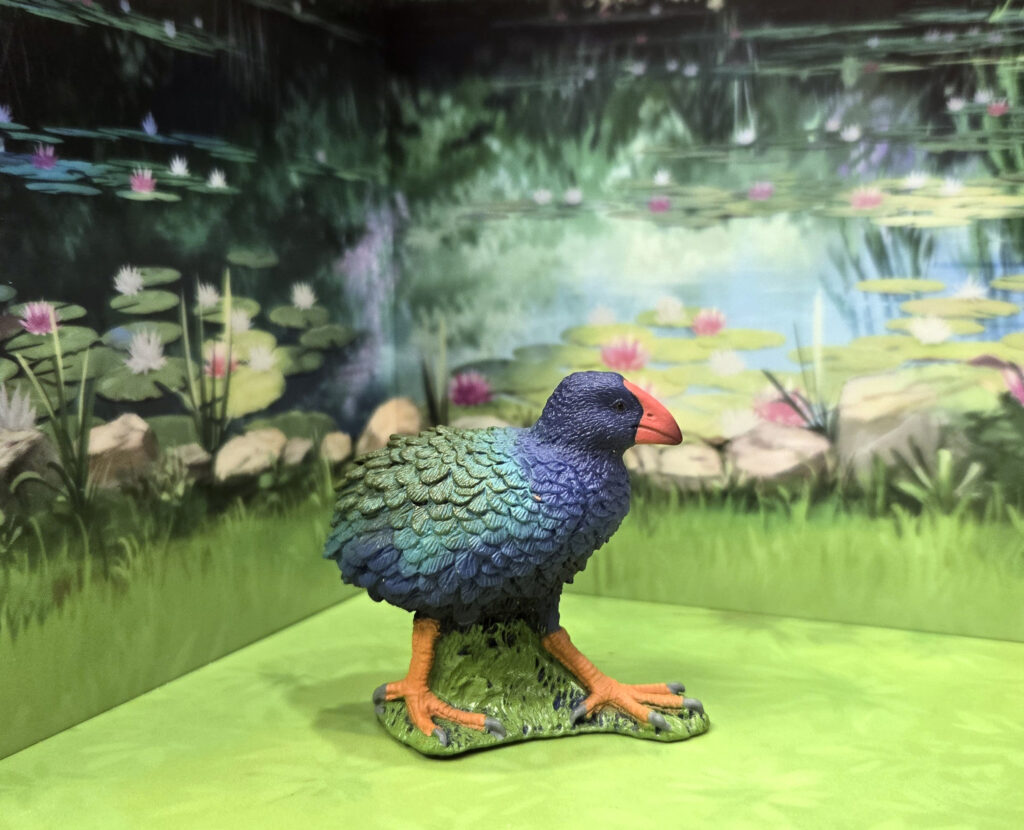
CollectA’s takahē is a gem of a little figure and comes highly recommended to collectors, especially those of interesting taxa. Wild birds that are not raptors, owls, ostriches, or penguins are not as common in our hobby, so getting a rallid endemic to New Zealand was a pleasant surprise.
Disclaimer: links to Ebay and Amazon on the AnimalToyBlog are affiliate links, so we make a small commission if you use them. Thanks for supporting us!



